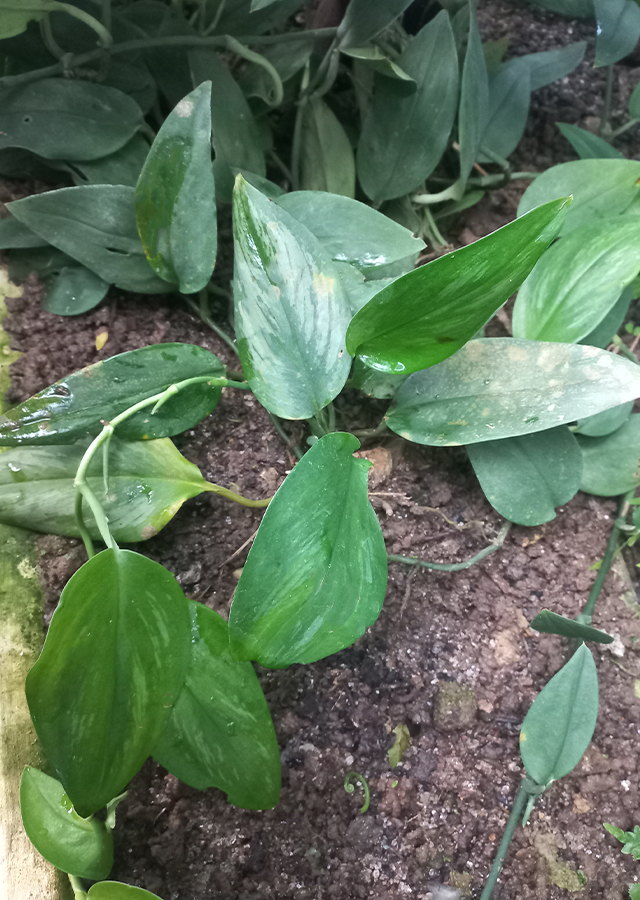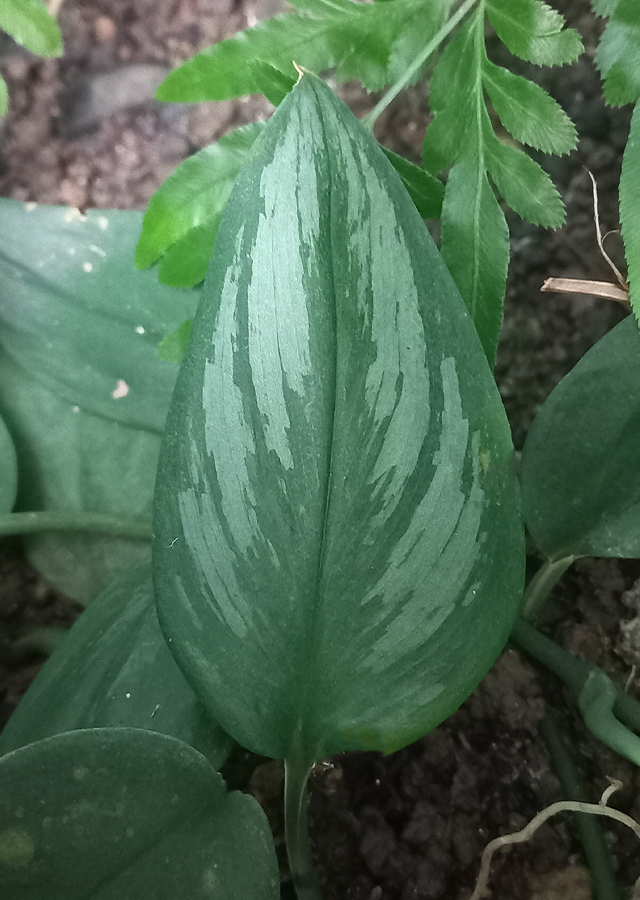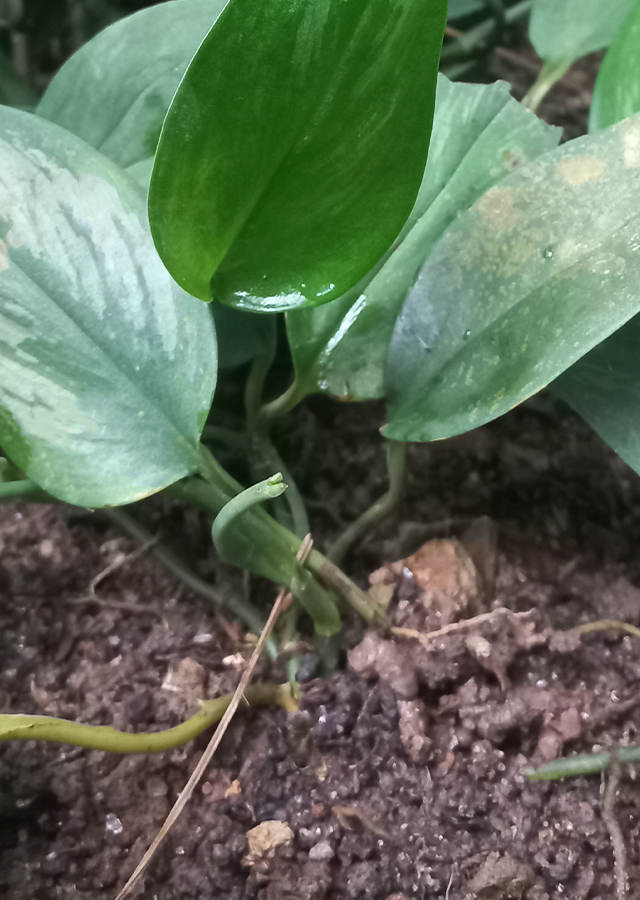Traditional Herbs from Scindapsus officinalis
rheumatism
- Take enough fresh leaves\u00a0Scindapsus officinalis\u00a0\u00a0wash them thoroughly.
- Crush them until they become a paste.
- Apply on the rheumatism affected area.
What is Scindapsus officinalis Looks like??



Parts of Scindapsus officinalis that could be used
- Shoot
- Leaf
- Root
- Stem
Scindapsus officinalis Distribution
Scindapsus officinalis originates from the Indian Subcontinent to Indo-China, especially widespread in the south-central region of China and tropical parts of India. Many are cultivated specifically in tropical areas as ornamental plants. This species is a plant that has long been and is popularly used in the Ayurvedic system of medicine, including to treat “atisara� (diarrhea) and “svasa� (asthma). It is an ingredient that is also used in the preparation of Kunch Pak, used since ancient times in Ayurvedic medicine where it is believed to have aphrodisiac properties. Traditionally, the entire Scindapsus officinalis plant has also been used in Guizhou, Yunnan and Guangxi Provinces in China as a medicine to treat bone fractures. Based on the results of the study, it shows that Scindapsus officinalis is an important medicinal plant that has a diverse pharmacological spectrum, including anticancer and anti-inflammatory properties.Agroecology of Scindapsus officinalis
Scindapsus officinalis is a large epiphytic climber plant, which along the sub-Himalayan tract can be found at altitudes between 330-1000 m above sea level in West Bengal, Orissa, Andhra Pradesh, Burma and the Andaman Islands. Usually the plant can be found in mixed dry lowlands or dry deciduous to hilly forests, it is also able to grow on granite, sandstone and limestone, at an altitude of around 600 m above sea level. This plant climbs trees and rocks using aerial roots on its trunk. Able to grow both in shaded conditions and in full sun, but prefers shaded conditions or indirect sunlight and a humid environment. Open conditions will make the color of the leaves paler. In care, this plant requires moderate (moderate) watering.
Morphology of Scindapsus officinalis
- The roots have aerial adventitious roots.
- The stem is round, the growth direction is perpendicular, not gummy, the surface of the stem is smooth, light green. The underground stem is a rhizome, the outside is light brown, the inside is purplish brown.", "Single leaf, ovate, elliptical-ovate, or almost orbicular, leaf tip tapered, leaf base round or heart-shaped (cordate), leaf edge flat, leaf spines pinnate (pinnenervis), leaf location opposite, leaf surface Leaves are dark green, sometimes marked with cream-colored spots and veins on the upper surface and greyish green below, petiolar sheaths are broad or winged.\u00a0
- Flowers are neatly arranged in a spadix. (flower cob), cylindrical in shape,\u00a0greenish yellow,\u00a0covered with filiform hairs from base to apex (spathe) is long, oval, funnel-shaped, has a slender beak, is green on the outside and yellow on the inside. The stigma is elongated.
- The fruit is gray-brown, rough and scaly. Seeds are present in every fruit.
- Seeds are kidney-shaped, grayish brown, smooth, shiny.
Cultivation of Scindapsus officinalis
Propagation is carried out vegetatively with stem cuttings (choose stems that have roots at the segments or stem nodes).
Scindapsus officinalis, more details :
Chemical Content of Scindapsus officinalisMonoterpene glycoside, phenyl glycoside, caffeoyl derivatives, alkaloids, scindapsin A, scindapsin B, ll-hydroxy-cis, cis-5,8- tetracosadienoic acid, cyclopropenoid fatty acids, piperine, ascorbic acid, steroids, flavonoids, and terpenoids.
Benefits of Scindapsus officinalis
Treats diarrhea, respiratory diseases (cough, bronchitis, pharyngitis, asthma, ozoena), worm infestations, erectile disorders, dysentery, throat disorders, broken bones, sprains and/or bone dislocations, wounds and cancer wounds, rheumatism, gout, fever , pain, increase appetite, improve the quality of breast milk. Has activity as anti-inflammatory, carminative, aphrodisiac, anthelmintic, cardiotonic (strengthens heart performance), diaphoretic (produces sweat), antiprotozoal (fruit), hypoglycemic (stems and fruit), anticancer, analgesic (pain reliever), cytostatic (cell growth inhibitor) , hepatoprotective (liver protection), and antidiabetic.
Simplisia of Scindapsus officinalis
- Prepare enough leaves\u00a0Scindapsus officinalis, wash them thoroughly with running water.
- Dry them in the sun or in an oven at a temperature\u00a040 \u00b0C until the water content\u00a010%.
- Clean them using a blender until they become powder.", "Store in a clean, airtight container.
Another Facts for Scindapsus officinalis :
Synonym of Scindapsus officinalisMonstera officinalis (Roxb.) Schott, Pothos officinalis Roxb., Scindapsus annamicus Gagnep.
Habitus of Scindapsus officinalis
Creepers. Climbing plant, liana, annual, reaches 0.8 m in height
Habitat of Scindapsus officinalis
- Forest
- Land
No comments:
Post a Comment